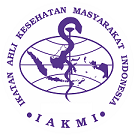The Effect of Using a Dynamic Wrist Splint on Wrist Pain in Stroke Patients
DOI:
https://doi.org/10.26911/theijmed.2024.09.04.06Abstract
Background: Hand movement function in hemiplegic stroke patients is impaired due to contractures and spasticity. Pain in the wrist joint often occurs when moved. This research aims to determine how dynamic wrist splints can reduce wrist pain in stroke patients.
Subjects and Method: This was a quasi-experimental study. The subjects were 20 hemiplegic stroke patients in Colomadu Karanganyar. The research was carried out in July – September 2023. The dependent variable was wrist pain. The independent variable was the use of a dynamic wrist splint. measurement the degree of pain using the Visual Analog Scale which is used to determine the level of pain felt by the sufferer. Data normality test using Shapiro-Wilk. The statistical test used in this research is wilxocon.
Results: The ages of subjects ranged from 30 to 62 years. Wrist pain was reduced after the use of a dynamic wrist splint compared to levels before its use.
Conclusion: There is an influence of dynamic wrist splints on wrist pain in stroke patients.
Keywords:
Sroke, dynamic wrist splint, painReferences
Ashford S, Turner-Stokes LF, Allison R, Duke L, Moore P, Bavikatte G, Kirker S, et al (2018). Spasticity in adults: management using botulinum toxin. National guidelines. Second Edition. Royal College of Physicians.
Brose SW, Boninger ML, Fullerton B, McCann T, Collinger JL, Impink BG, Dyson-Hudson TA (2008). Shoulder ultrasound abnormalities, physical examination findings, and pain in manual wheelchair users with spinal cord injury. Archives of Physical Medicine and Rehabilitation. WB Saunders. 89(11): 2086–2093. doi: 10.1016/J.APMR.2008.05.015.
Chinembiri B, Machuki BO, Chen W, Zhang M, Shang K (2018). A dynamic splint for the treatment of spasticity of the hand after stroke? Recognition of its design, functionality and limit-ations: A narrative review article. Journal of Neurology and Neuro-rehabilitation Research. 03 (02). doi: 10.35841/neurologyneurore-habilitation.3.2.1-5.
Chang WD, Lai PT (2015). New design of home-based dynamic hand splint for hemiplegic hands: a preliminary study. Journal of Physical Therapy Science, The Society of Physical Therapy Science. 27(3): 829–831. doi: 10.1589/JPTS.27.829.
Riset Kesehatan Dasar (2018). Laporan Nasional Riskesdas 2018, Badan Penelitian dan Pengembangan Kesehatan Riset.
Gambhir PK (2016). Evidence base of stroke and hand splinting. Int J Sci Res. 5(2): 1648–1651. doi: 10.21275/-v5i2.nov161521.
Kwakkel G, Kollen BJ (2012). Predicting activities after stroke: what is clini-cally relevant? SAGE Publications Sage UK: London, England. 8(1): 25–32. doi: 10.1111/-J.1747-4949.2012.-00967.X.
Lannin NA, Cusick A, McCluskey A, Herbert RD (2007). Effects of splint-ing on wrist contracture after stroke: A randomized controlled trial. Stroke. 38(1): 111–116. doi: 10.1161/01.STR.0-000251722.77088.12.
McGeer PL, McGeer EG (2004). Inflammation and the degenerative diseases of aging. Annals of the New York Academy of Sciences. 1035(1): 104–116, doi: 10.1196/ANNALS.-1332.007.
Morris JH, John A, Wedderburn L, Rauch-haus P, Donnan PT (2019). Dynamic Lycra orthoses as an adjunct to arm rehabilitation after stroke: a single-blind, two-arm parallel-group, randomized controlled feasibility trial. Clinical Rehabilitation. 33(8): 1331–1343, doi: 10.1177/026921-5519840403/-SUPPL_FILE/SUPPLEMENT-AL_MATERIAL.PDF.
Morris MW, Hong YY, Chiu CY, Liu Z (2015). .Normology: Integrating insights about social norms to under-stand cultural dynamics. doi: 10.10-16/j.obhdp.2015.03.001.
Pandyan AD, Price CIM, Barnes
MP, John-son GR (2003). A biomechanical investigation into the validity of the modified Ashworth Scale as a mea-sure of elbow spasticity. SAGE Publi-cationsSage CA: Thousand Oaks. 17(3): 290–294. doi: 10.1191/0269-215503CR6-10OA.
Sæbø H, Naterstad IF, Joensen J, Staus-holm MB, Bjordal JM (2022). Pain and disability of conservatively treated distal radius fracture: a triple-blinded randomized placebo-controlled trial of photobio-modulation therapy. Photomed Laser Surg. 40(1): 33–41. doi: 10.1089/PHOTOB.2021.0125.
Smeltzer SC, Bare BG (2002). Keperawatan medikal bedah. Jakarta: EGC.
Tisya A, Tarwaka T, Dwi A (2023). Hubungan risiko postur kerja dengan keluhan muskuloskeletal pada pekerja perkantoran. Environ-mental Occupational Health And Safety Journal. 3(2): 153–160, doi: 10.24853/EOHJS.3.2.153-160.
Ural FG, Öztürk GT (2017). The acupunc-ture effect on median nerve morpho-logy in patients with carpal tunnel syndrome: An ultrasonographic study. Hindawi Limited. doi: 10.1155/2017/7420648.




